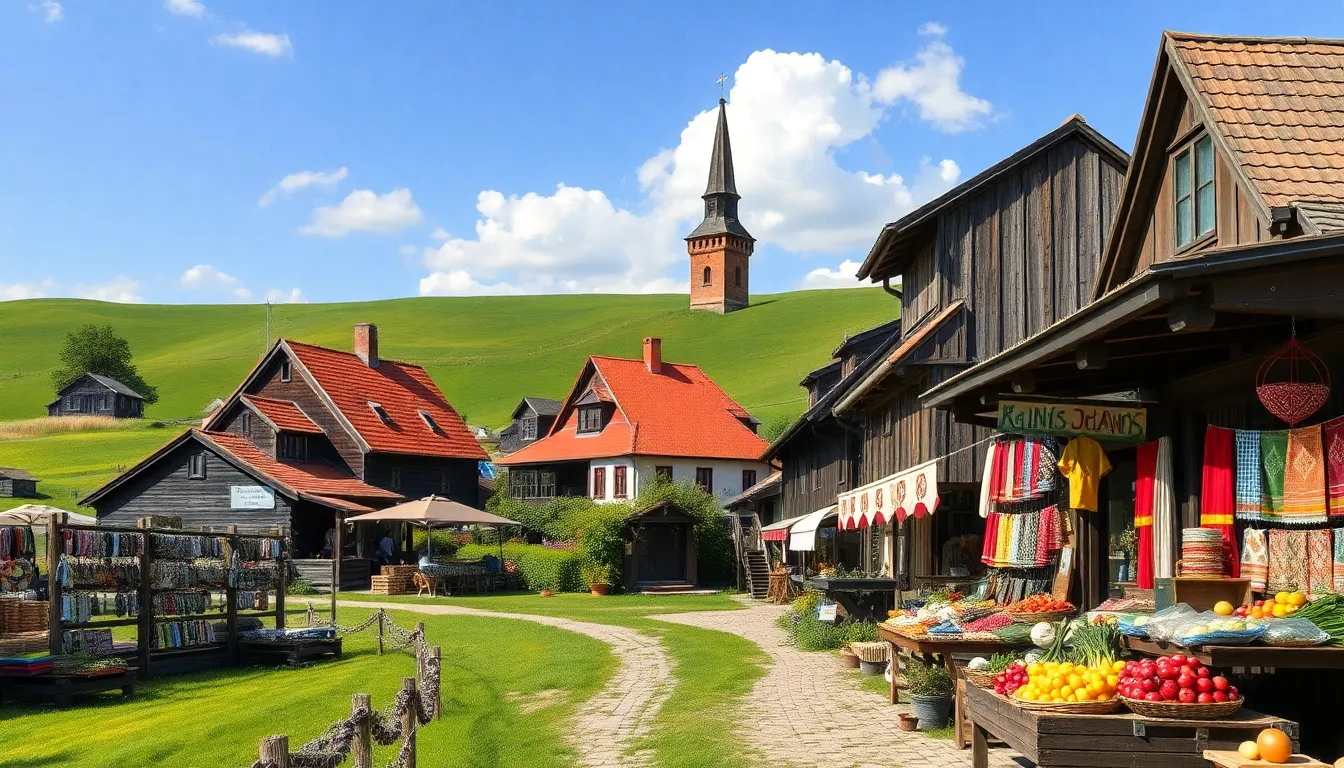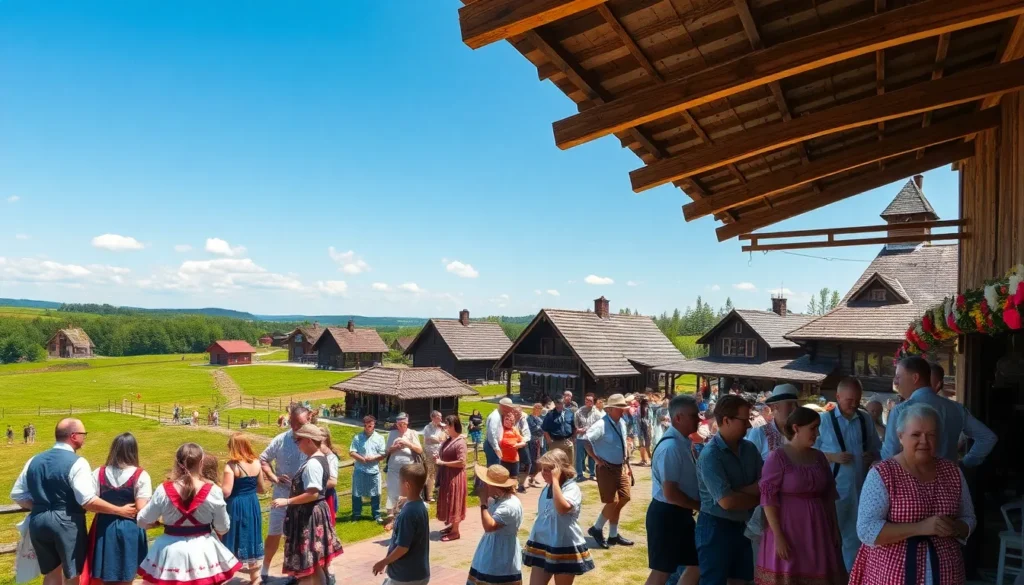Table of Contents
TogglePoland, a country rich in history and culture, boasts a unique linguistic landscape. The official language spoken by the Polish people is Polish, a West Slavic language that has evolved over centuries. With its distinct sounds and complex grammar, Polish reflects the nation’s heritage and identity.
Beyond its borders, Polish is spoken by millions in communities around the world, making it one of the most widely spoken languages in Europe. Understanding the nuances of Polish not only opens doors to communication but also provides insight into the vibrant traditions and customs of the Polish people. As global connections deepen, exploring the Polish language becomes increasingly relevant for travelers, linguists, and anyone interested in cultural exchange.
What Language Do Polish Speak?
Poland’s official language is Polish, a member of the West Slavic language group. Polish belongs to the larger Indo-European family, integrating unique sounds and complex grammar. Approximately 45 million people speak Polish as their first language, with additional speakers among Polish expatriates.
Polish utilizes a Latin alphabet with specific diacritics that modify pronunciation. The language features seven grammatical cases, reflecting relationships and functions of words in sentences. Additionally, the pronunciation of Polish includes nasal vowels and consonants that may be challenging for non-native speakers.
Understanding Polish aids in engaging with Poland’s culture, literature, and history. The language’s rich vocabulary draws from Slavic roots, along with influences from Latin, German, and French. As a widely spoken language in Europe, Polish serves as a vital resource for cultural exchange and communication within diverse social contexts.
Overview of the Polish Language

Polish, the official language of Poland, boasts a rich history and complexity that reflects the country’s cultural identity. As one of Europe’s most widely spoken languages, it serves as a vital medium of communication for millions.
Historical Background
Polish originated in the early Middle Ages, around the 10th century, influenced by Latin and various Slavic dialects. Poland’s tumultuous history, including partitions and wars, shaped the language significantly. Over centuries, Polish absorbed vocabulary from German, Czech, and Russian. The establishment of standard Polish in the 18th century marked a turning point in its evolution, solidifying its role in literature and national identity.
Language Family
Polish belongs to the West Slavic branch of the Indo-European language family. It shares this group with Czech and Slovak languages, reflecting common linguistic roots and characteristics. The Slavic languages exhibit notable features such as rich morphology, including seven grammatical cases, which distinguish them from other Indo-European languages. Polish also utilizes a Latin-based alphabet with unique diacritics, enhancing its phonetic richness and complexity.
Dialects and Variations
Polish exhibits several regional dialects and variations, reflecting the diverse influences and historical context of various areas in Poland.
Regional Dialects
Polish dialects generally fall into three main groups: Greater Polish, Lesser Polish, and Silesian.
- Greater Polish: Predominantly spoken in the western region, this dialect features unique phonetic characteristics, such as vowel pronunciation.
- Lesser Polish: Common in southern areas, it includes dialectal variations in vocabulary and grammar, particularly influenced by the historical presence of Ruthenians and Ukrainians.
- Silesian: This dialect, spoken in Silesia, has substantial German and Czech influences, making it distinct from standard Polish. While it shares similarities with Polish, some consider it a separate language due to its unique vocabulary and pronunciation.
Influence of Other Languages
Polish shows significant lexical borrowing from other languages due to historical interactions and multicultural exchanges.
- German: Economic and political ties, particularly during the partitions of Poland, led to considerable integration of German words into everyday Polish.
- Czech: Neighboring geographical proximity contributed to shared vocabulary, especially in literature and cultural discussions.
- Russian: Political control by Russia in previous centuries introduced Russian terms, especially in formal and governmental contexts.
These influences enrich the Polish language, adding layers of complexity and breadth to its vocabulary, pronunciation, and usage.
The Role of Polish in Society
Polish plays a vital role in shaping national identity and cultural expression in Poland. As the predominant language, it fosters unity among its speakers and serves as a medium for preserving traditions.
Polish as a National Language
Polish serves as the official language of Poland, uniting the population of approximately 38 million within the country. It represents cultural heritage, history, and national pride. Official documents, education systems, and media operate primarily in Polish, reinforcing its significance in everyday life. The language supports national discourse and political discussions, ensuring cohesion among citizens. Polish language institutions, such as the Polish Language Council, promote its use and address linguistic issues, highlighting its role as a living component of Polish culture.
Polish in the Global Context
Polish speakers extend beyond Poland, with an estimated 3 million people living abroad, particularly in the United States, the United Kingdom, and Germany. This diaspora maintains the language through community organizations and cultural events, nurturing Polish identity among expatriates. The language’s prominence as one of the most spoken Slavic languages provides opportunities for cross-cultural communication and exchange. Polish’s increasing presence in international business and academia reflects its growing relevance in a globalized world. Various online platforms and language programs facilitate learning, allowing people worldwide to engage with Polish language and culture.
Learning Polish
Learning Polish presents both challenges and opportunities for language enthusiasts. Its unique phonetics and grammatical structure require dedication but offer a rewarding experience for those who persist.
Challenges for Learners
Polish poses several challenges that can deter learners.
- Complex Grammar: The language features seven grammatical cases, making sentence construction intricate.
- Pronunciation Difficulties: Polish has sounds that may be unfamiliar to non-native speakers, including nasal vowels and clusters of consonants.
- Vocabulary: Borrowings from German, Czech, and Russian can confuse learners, as they may encounter words with various meanings.
- Regional Dialects: The existence of dialects adds another layer of complexity, potentially hindering comprehension.
Resources for Learning Polish
Numerous resources support Polish language learners.
- Online Courses: Platforms like Duolingo and Babbel offer interactive lessons tailored for various proficiency levels.
- Textbooks: Books such as “Polish for Dummies” provide structured content for self-study.
- Language Exchange: Websites like Tandem and iTalki enable learners to practice with native speakers.
- Media Consumption: Watching Polish films, listening to music, and reading novels immerse learners in the language context.
- Community Classes: Local Polish cultural organizations often conduct language classes, fostering in-person learning and community engagement.
Polish stands as a vital language that embodies the heritage and identity of its speakers. With its rich history and complex structure it offers a unique linguistic experience. The language not only connects millions in Poland but also fosters a sense of community among expatriates worldwide. As global interest in Polish culture grows the language’s role in international dialogue and exchange becomes increasingly significant. For those eager to explore this fascinating language the resources available today make learning Polish more accessible than ever. Engaging with Polish opens doors to understanding its literature traditions and the vibrant culture that thrives within Poland and beyond.







